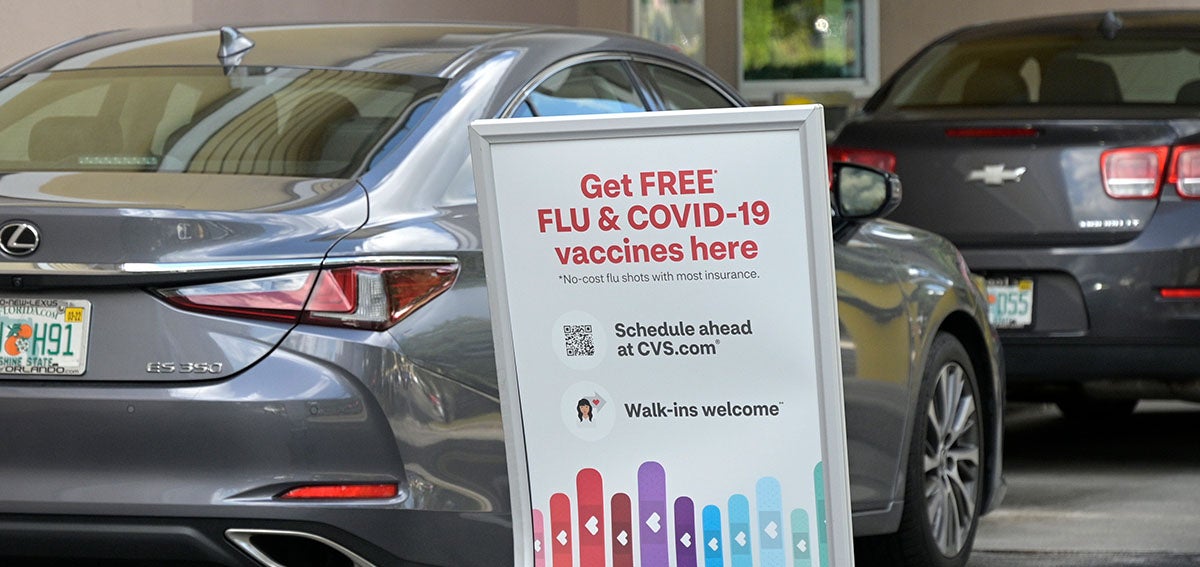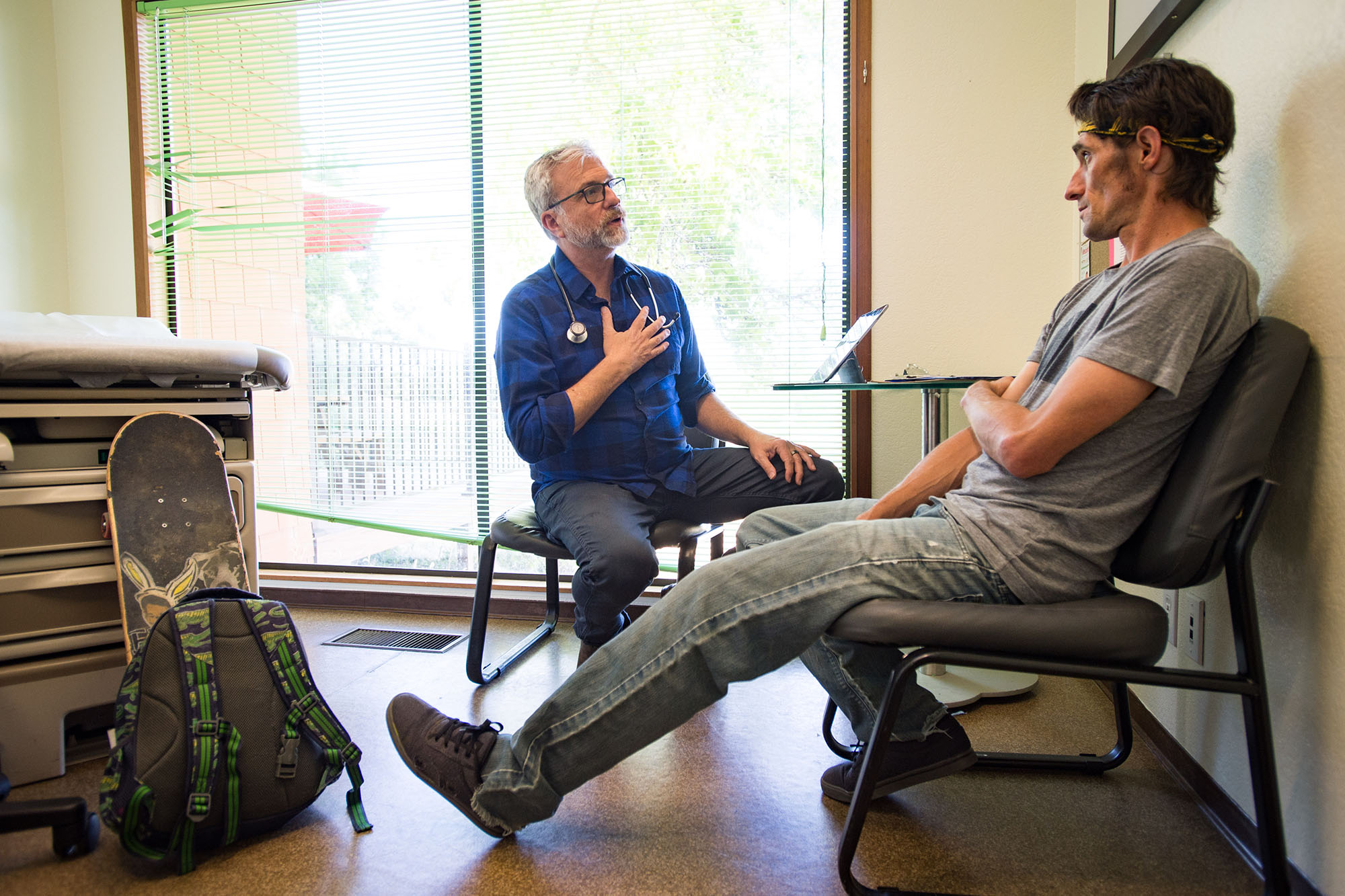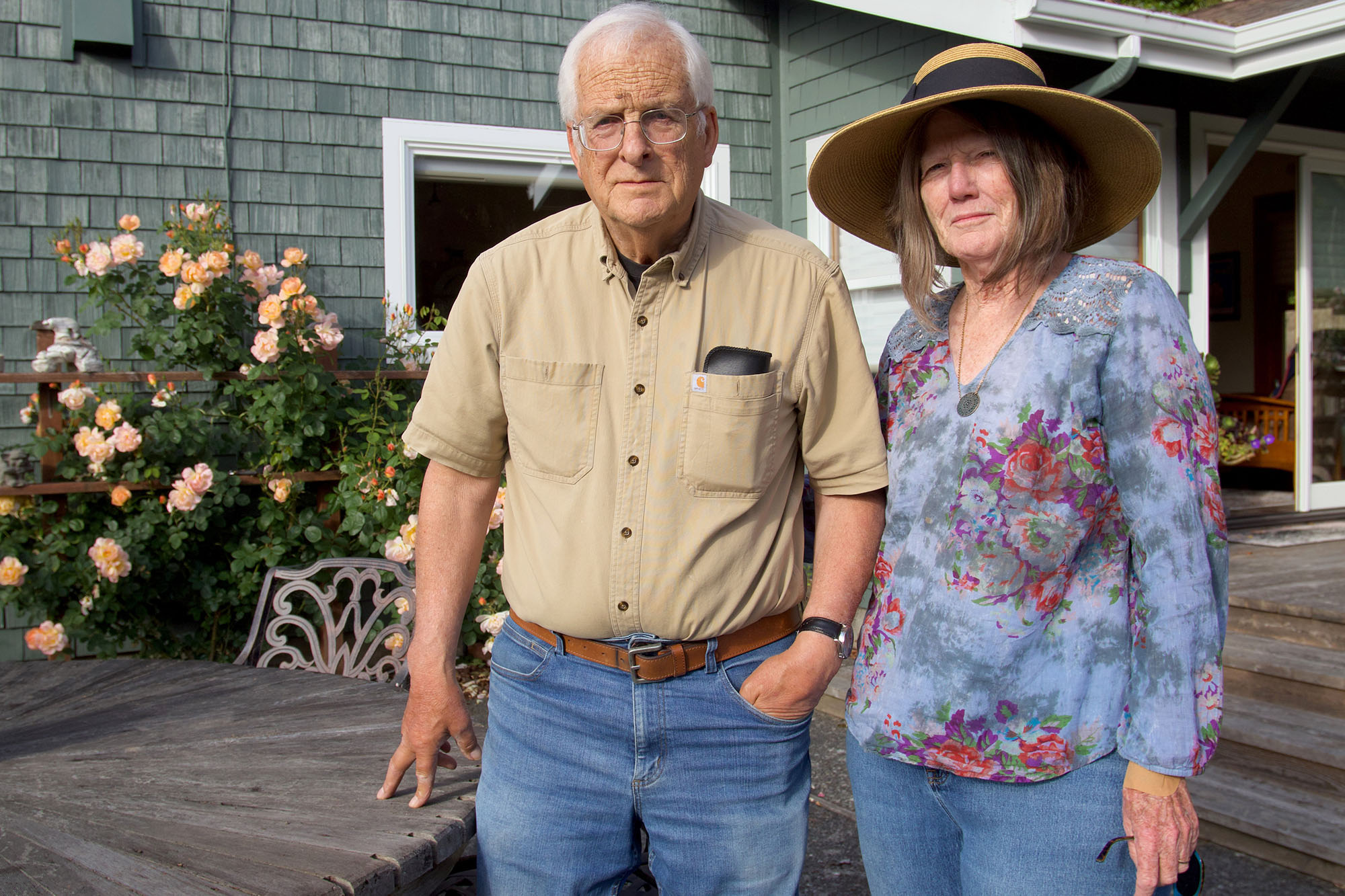
California’s COVID-19 vaccination rate is among the highest in the nation, but public health experts remain wary of a potential peril that the state avoided last winter — the arrival of a “twindemic.” Twindemic refers to simultaneous widespread infections of flu and COVID-19 viruses. In combination, these dangerous and contagious illnesses could overwhelm the health care system.

Flu season usually peaks between December and February. Although COVID-19 surged last winter, no twindemic materialized in 2020. We may not be so lucky this winter.
“Last year, we didn’t have a very big flu season because people were using masks, and that decreased the flu season activity,” Ricardo Correa, MD, associate professor of medicine at the University of Arizona College of Medicine told USA Today reporter Adrianna Rodriguez. “If we do the same thing this year and we wear masks as much as we can, then the flu season will not hit us as hard as years prior.”
This flu season, however, the same far-reaching public health requirements are not in effect on a broad scale. “Unfortunately, this year we have relaxed most of these measures,” Shira Shafir, an epidemiology professor at UCLA told CalMatters journalist Ana Ibarra.
“Because of so little [flu] last year, population immunity is likely lower, putting us all at increased risk of [flu] this year,” Rochelle Walensky, MD, MPH, director of the US Centers for Disease Control and Prevention (CDC), said at an October press briefing.
Last Year’s Mild Flu Season
In California, only 47% of adults and about 58% of children were immunized against the flu last year. While those are about the same rates as in the 2019–20 flu season, they are lower than most other states, Ibarra reported. The average flu vaccination rate for adults is 50% nationally and close to 84% for children.
Yet flu transmission remained low despite the subpar flu vaccination rates. “A combination of social distancing, wearing masks, travel restrictions, hand washing, remote work, and shuttered schools played key roles in dramatically reducing the number of flu cases during the 2020–21 season,” health reporter Linda Marsa explained in National Geographic.
While a typical flu season sees 200,000 confirmed cases nationwide, fewer than 2,000 cases were reported in 2020–21. Flu-related hospitalizations were the lowest ever recorded, Marsa reported.
“During the 2017–18 flu season, considered severe by the CDC, about 710,000 people were hospitalized nationwide — including about 100,000 people in California, health officials have estimated,” Ibarra reported.
Warning Signs as Winter Approaches
In late September, the summer surge fueled by the delta variant ended in California. Since then, statewide case and positivity rates have started to tick up again. “California’s progress against the COVID-19 pandemic appears to have stalled and reversed course, as new cases, hospitalizations, and deaths are once again trending upward across the state,” Aidin Vaziri reported last week in the San Francisco Chronicle.
“It’s not subtle, that’s for sure,” George Rutherford, MD, a UCSF epidemiologist, told Vaziri. “The numbers are increasing. Cases are up over the past three weeks. [Across California], we were down to as low as about 5,000 new cases per day. Now we’re up to 6,000 cases per day. Hospitalizations are up about 4% over two weeks. There have been some big spikes. To me, that is worrisome.”
An increase in COVID cases as flu season begins in earnest would put pressure on the health care system, a special concern for hospitals already struggling with staffing.
“The same specialists who would care for COVID patients are among those who would be caring for flu patients as well,” Nancy Foster, vice president for quality and patient safety policy at the American Hospital Association, told Washington Post journalist Fenit Nirappil. “We don’t want those individuals to be so overworked they cannot appropriately care for you, regardless of what brought you into the hospital.”
Some Health Workers Have Had Enough
Nurses, hospitalists, and other health care workers who would be on the front lines of a twindemic have repeatedly been exhausted by successive waves of COVID-19 since the pandemic erupted in March 2020. As a result, one-third of California hospitals were experiencing severe staff shortages in mid-October, according to reporting from Kristen Hwang at CalMatters. “Many workers have been driven away from the bedside by burnout, early retirement, and the seemingly unending stress of the pandemic,” Hwang wrote.
While close to 80% of Californians age 12 and older have been immunized against COVID, that still leaves pockets of people who could flood hospitals this winter, Ibarra noted.
In areas with lagging vaccination rates, such as Fresno, Riverside, and San Bernardino Counties, conditions are already deteriorating, Luke Money and Rong-Gong Lin II reported in the Los Angeles Times. “Since mid-October, COVID-19 hospitalizations have risen by more than 27% in both San Bernardino and Fresno Counties; in Riverside County, numbers are up by 21% over the last two weeks,” they wrote.
Mark Ghaly, MD, the head of California’s Health and Human Services agency, has encouraged all Californians to get their booster shot, Lin and Money reported last week. Tómas Aragón, MD, the state health officer and public health director, also wrote a letter last week instructing providers to give a booster to anyone (PDF) 18 or older who had their Moderna or Pfizer vaccine at least six months ago or a Johnson & Johnson vaccine more than two months ago. “Do not turn a patient away who is requesting a booster” if they have met the timing criteria, Aragón wrote.
How to Avert a Twindemic
While public health and infectious disease experts are worried, they acknowledge that the severity of flu seasons is difficult to predict.
Habits developed during the COVID pandemic, like masking in crowds and staying home when sick, may continue to tamp down flu cases this year even as public health officials continue to relax restrictions, Nirappil reported in the Washington Post.
Yet because of decreased immunity nationwide, it is unlikely that the flu season will be as mild as it was last year, Walensky said.
Flu shots, as well as vaccination against COVID-19 and booster shots, are the best way to avoid a twindemic.
“We do know that the most recent flu season was relatively mild in the Southern hemisphere and that the vaccine was a good match for the strains circulating there,” Penny Borenstein, MD, MPH, San Luis Obispo County’s health officer, told Ibarra. “We are hoping for a similar outcome during our soon-to-arrive Northern hemisphere flu season.”
In addition to getting flu vaccines, people should be cautious when planning holiday celebrations this year. “You don’t need to have 60 people over for Thanksgiving,” Rutherford told Ibarra. “Keep it small, make life simpler.”
Authors & Contributors

Heather Tirado Gilligan
Heather Tirado Gilligan is a journalist who has written for publications including Slate, The Nation, CNN, and the Washington Post. Previously, she was executive editor of the California Health Report, a news nonprofit covering disparities in health and access to health care. Heather received a master’s degree in journalism from UC Berkeley and a PhD in English from Rutgers University, where she studied race in American culture.





